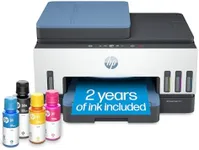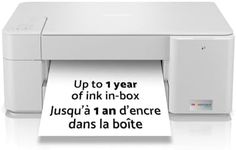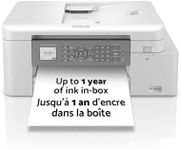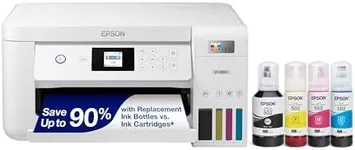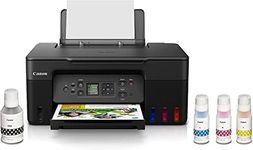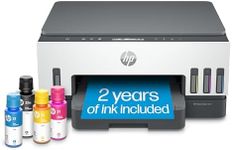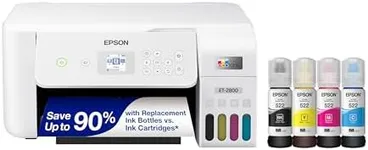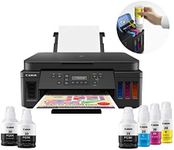Buying Guide for the Best Ink Tank Printers
Choosing the right ink-tank printer can make a big difference in your printing experience, especially if you print frequently or in high volumes. Ink-tank printers are known for their refillable ink reservoirs, which can be more cost-effective and convenient than traditional cartridge-based printers. To find the best fit for your needs, it's important to understand the key features and specifications that set different models apart. By considering how you plan to use the printer—whether for home, office, photos, or documents—you can focus on the specs that matter most to you.Print SpeedPrint speed tells you how many pages per minute (ppm) the printer can produce. This is important if you often print large documents or need quick results. Lower speeds (under 10 ppm) are fine for occasional home use, while higher speeds (15 ppm and above) are better for busy offices or frequent printing. Think about how much you print and how patient you are—if you print a lot, a faster printer will save you time.
Print Quality (Resolution)Print quality is measured in dots per inch (DPI), which indicates how sharp and detailed your prints will be. Higher DPI (1200 x 2400 and above) is important for photo printing or graphics, while standard DPI (600 x 1200) is usually enough for text documents. If you mostly print text, you don't need the highest resolution, but if you want to print photos or detailed images, look for a higher DPI.
Ink Tank CapacityInk tank capacity refers to how much ink the printer can hold before needing a refill. Larger tanks mean you can print more pages between refills, which is convenient for heavy users. If you print only occasionally, a smaller tank is fine, but for frequent or high-volume printing, a larger capacity will reduce the hassle of refilling and help you avoid running out of ink unexpectedly.
Connectivity OptionsConnectivity options include USB, Wi-Fi, Ethernet, and sometimes Bluetooth. Wi-Fi allows you to print wirelessly from multiple devices, which is great for households or offices with several users. USB is simple and reliable for single-computer setups. Ethernet is useful for wired office networks. Choose the connectivity that matches how and where you plan to use the printer—wireless is best for flexibility, while wired connections can be more stable.
Duplex PrintingDuplex printing means the printer can automatically print on both sides of the paper. This feature saves paper and is convenient for creating booklets or double-sided documents. If you often print multi-page documents or want to be eco-friendly, look for automatic duplex printing. If you rarely need double-sided prints, this feature may not be essential.
Scanner and Copier FunctionsMany ink-tank printers are all-in-one devices, meaning they can scan and copy as well as print. If you need to digitize documents or make copies, look for a model with these features. If you only need to print, a basic printer will do, but if you want more versatility, an all-in-one model is a better choice.
Paper HandlingPaper handling covers the types and sizes of paper the printer can use, as well as the size of the input tray. If you print on envelopes, labels, or photo paper, check that the printer supports these media. A larger input tray is helpful if you print in bulk, so you don't have to reload paper as often. Match the paper handling features to the types of documents you plan to print most often.
